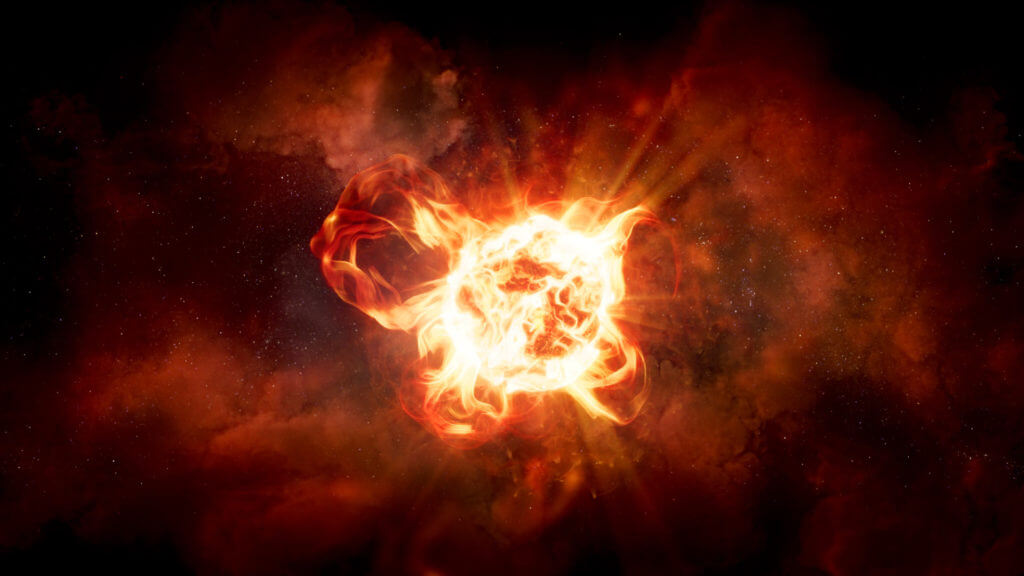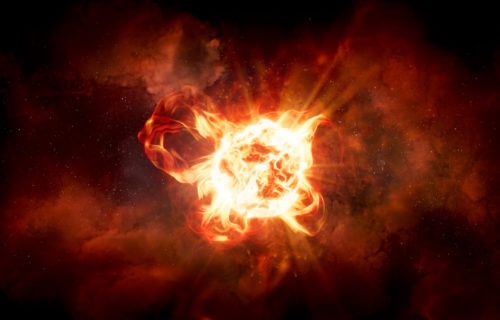PASADENA, Calif. — One superstar in our night sky refuses to blink out. VY Canis Majoris, a rare hypergiant star that lives a short lifetime, is offering secrets before its imminent death.
A team of researchers from the University of Arizona watched solar emissions to create a three-dimensional image of the dying star, also called VY CMa. Lead researchers Lucy Ziurys and Ambesh Singh traced the distribution, directions, and velocities of a variety of molecules ejecting in the uneven envelopes of bursts from VY CMa. They presented these findings this year at the 240th Meeting of the American Astronomical Society in Pasadena, California.
The team gave impressive insight into an otherwise notably puzzle-pieced picture of VY CMa. This supergiant has had no photos taken of it, as camera-shy as it is. However, through this data, we’ve been able to formulate a better picture of the evolution and death of hypergiants.
“Think of it as Betelgeuse on steroids,” explains Professor Ziurys, in a statement. “It is much larger, more massive, and undergoes mass eruptions every 200 years.”
Hypergiant stars are especially rare in the Milky Way and are highly sought for information. These late-stage near-death stars offer us pictorial ideas of how each stage of a star begins and ends. It is with this information we can further piece together the grander puzzle of how the universe came to be, what it will do, and what will be of our universe as we know it.

How ironic that we can’t focus our physical lenses on VY CMa, but through other senses (like sight, sound, etc) we can paint a picture of it with our minds. With VY CMa being so close, about 3,009 LY (light years) to us, that makes it an ideal target for observation and study.
Professor Ziurys’ team found they could make preliminary maps from the molecules of sulfur oxide, sulfur dioxide, silicon oxide, phosphorus oxide, and sodium chloride. They were able to watch the molecules create an image that was once an unmappable object despite its proximity and luminosity. This molecular-based image that we’ve recreated gives us a better understanding, a real “something” to work within our hands as we continue to speculate what exactly the death of a hypergiant looks like.
What we once assumed was a massive firework show of a supernova might actually be a quiet implosion into a black hole.
The team went to Chile to the Atacama Large Millimeter Array, or ALMA, and used the 48 radio dishes in multiple different configurations to help obtain the velocities and directions of these molecules projected from VY CMa. A secretive but stunning star in the southern constellation that is Canis Majoris finally allows us to see the truth of what happens during this M3-M4.5-class star’s death.
Will it rebirth into a new nexus of rippling life or cause another mysterious void of dark matter and gravitational hole into the unknown?
The team hopes to map out VY Canis Majoris before it dies. However, the big gleaming gem is likely to outlive our intrepid and adventurous scientists — but not before they leaving behind a map for future generations to look at and thank them for.
